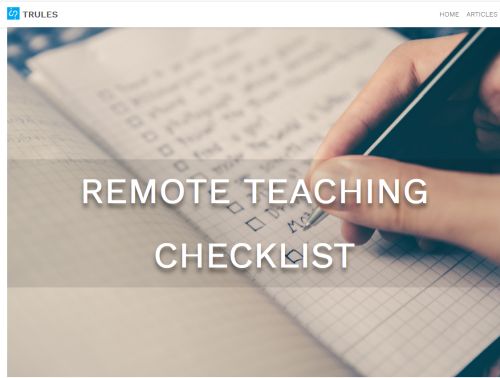Remote Teaching Checklist

Remote Teaching Checklist
Q: How can you become a great remote teacher?
A: Follow a checklist
Have you been thrust into teaching your classes online? Many of my friends and family have, and many are finding that the challenges of teaching online are daunting.
I’ve been teaching online for many years, and I can assure you that the skills that you mastered to become a teacher were harder for you to acquire than the skills that you’ll need to acquire to master online teaching.
Teaching, as you know, is all about communication. You’re already a great communicator - all that you need to master are the additional skills that are unique to remote communications.
It’s not about learning how to use Zoom, Skype, Microsoft Teams, Google Hangouts, Slack or any other tool. It’s about learning how to communicate with a remote audience.
What adjustments do you need to make for remote communications with your students?
Here are questions that I ask to figure out how to adjust each lesson plan for a remote audience:
- How can I organize the lesson to deal with short attention spans?
- Which information must be presented live?
- Which information can be presented offline?
- How can I effectively respond to remote feedback?
- How can I measure a remote student’s engagement and understanding?
Answering these questions is the single best thing that I have done to improve my remote teaching because they help me focus on “What’s different?”.
- People’s online attention span is very short, so keeping “live” online communications to a minimum is almost always a good idea.
- Getting feedback from your students is essential, so structure your lessons to include encouraging feedback.
Once I’ve determine what needs to be “live” and what needs to be “offline”, then I can organize my lessons and pick the right communication tools for each.
Please feel free to share this checklist and adapt it in whatever way you need to. Make it your own and share with your colleagues.
This checklist was provided by Trules streamlines shared decisions™